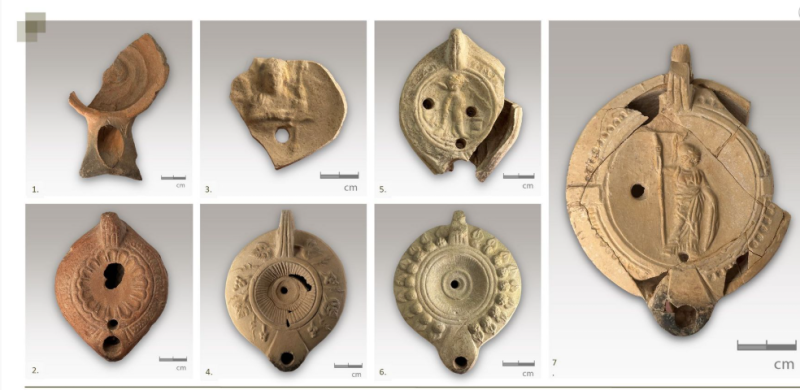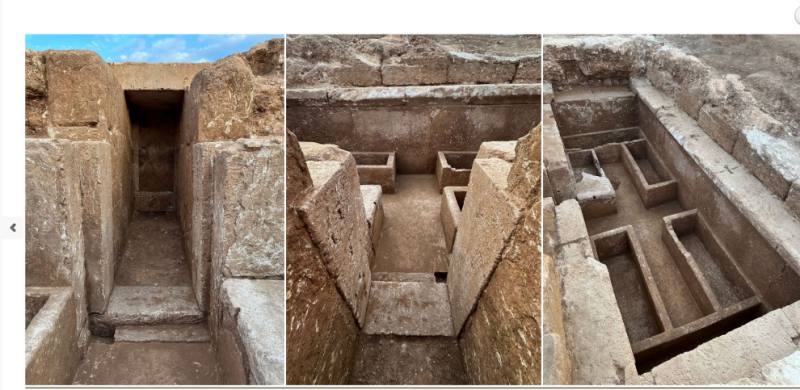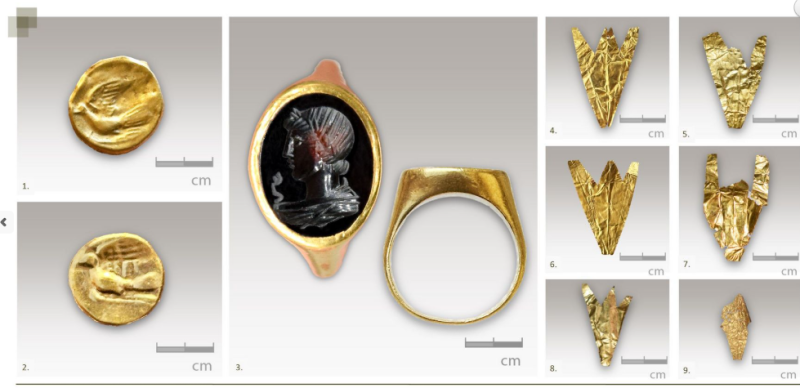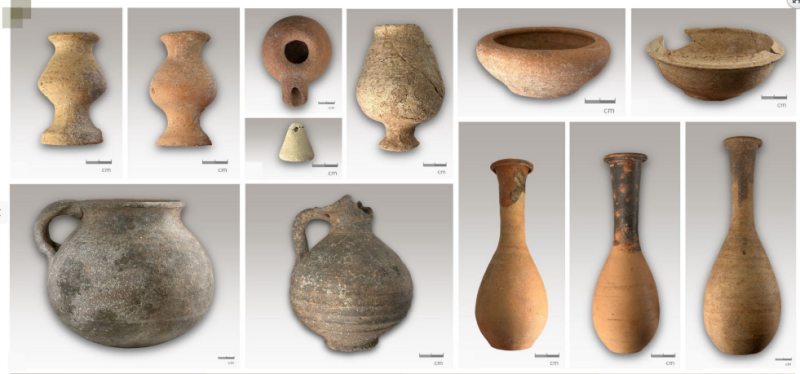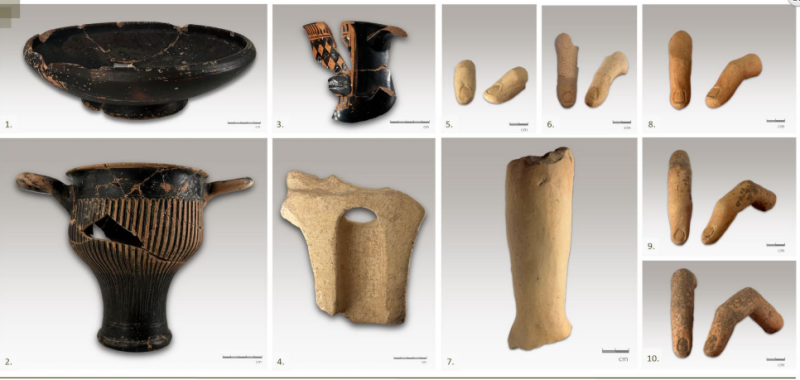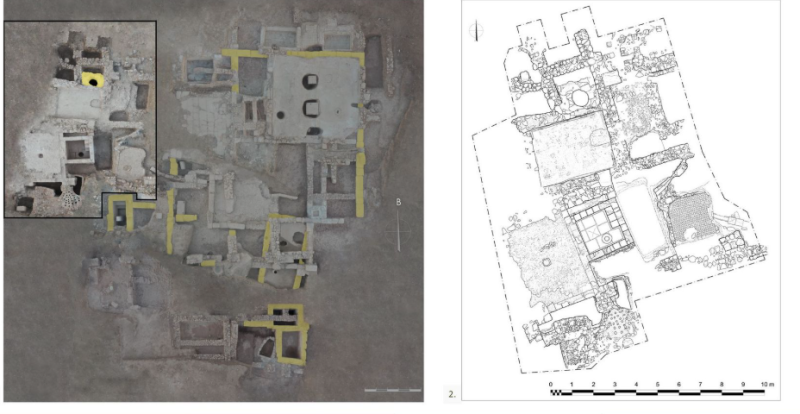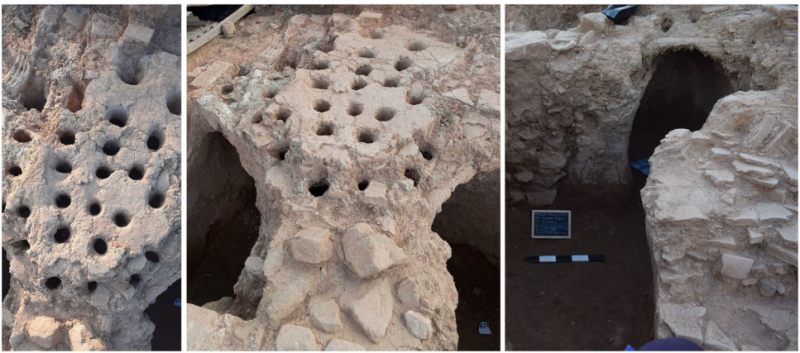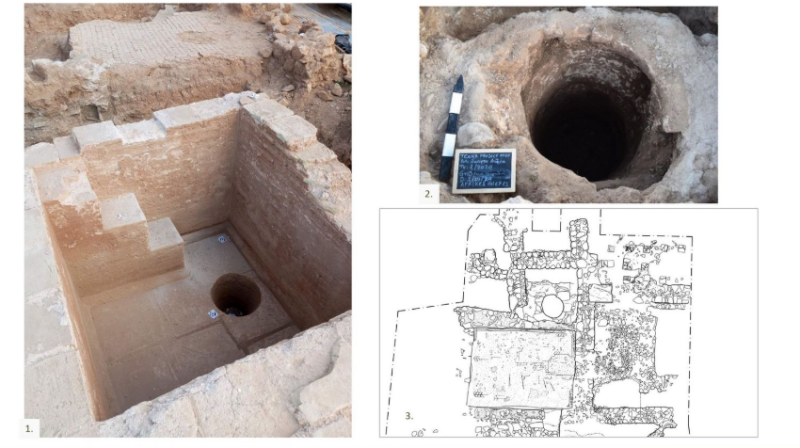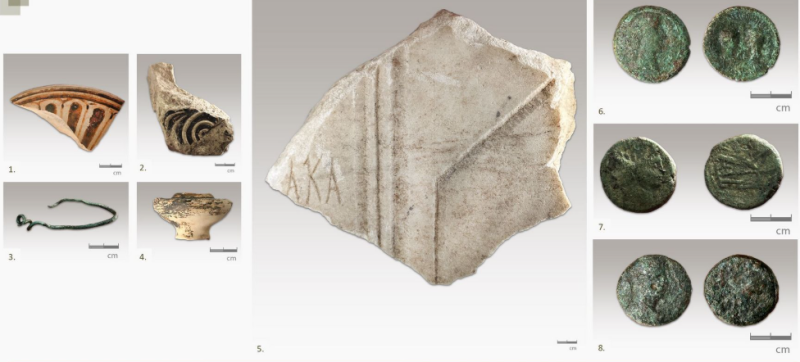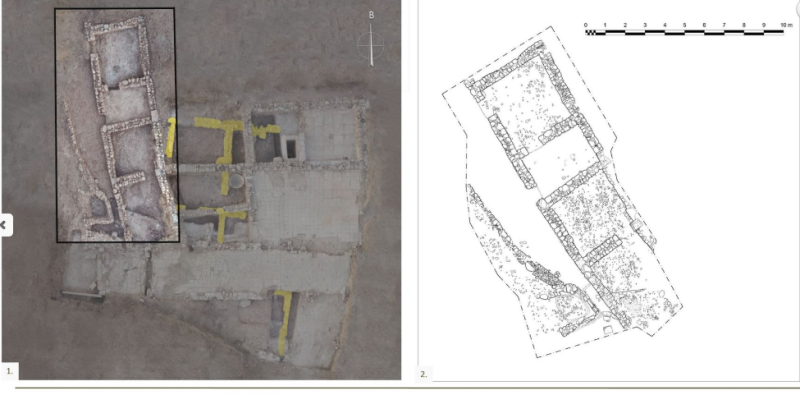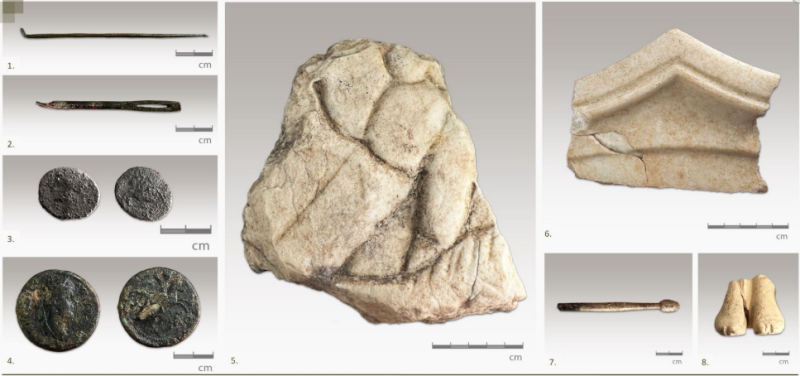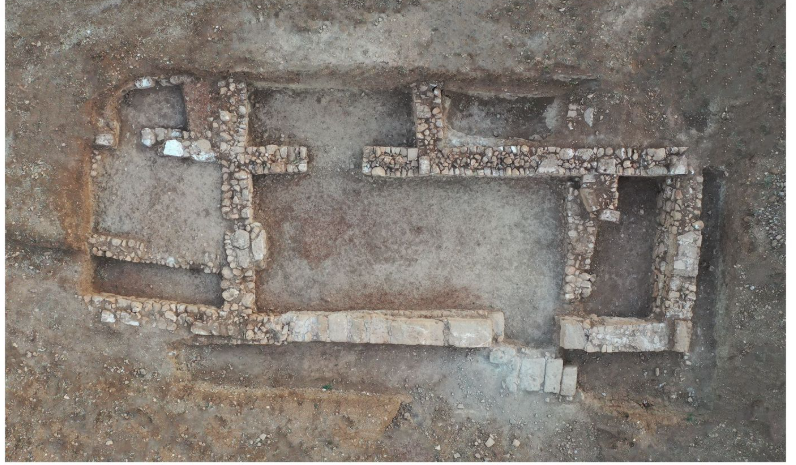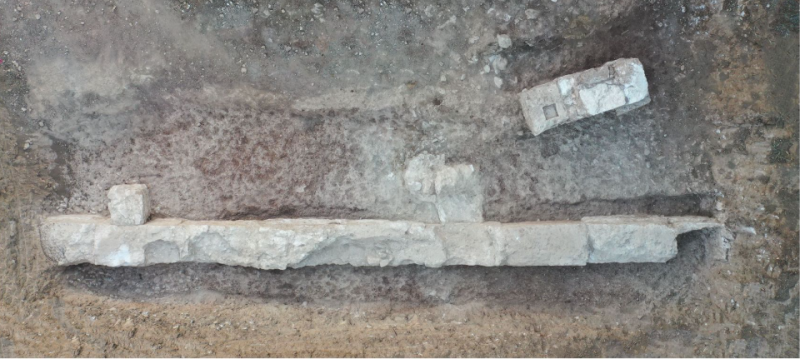The findings that came from the interior of the monument and the graves within it are rich and date mainly in the Hellenistic and Roman years
In October 2024, the work of systematic archaeological research was completed at Kilomodi Corinthin the framework of the “Ancient Tenneas” research program. This year, for the first time, a monumental burial building was revealed to Corinth in the standards of the Macedonian tombs (fig. 1).
Findings from abroad (Fig. 2) and its interior clearly refer to its centuries -long use and to a healing cult.
The burial monument is shaped as an unbalanced “T” of the floor and consists of two modules, the 2.80m access corridor. × 1.20m. and the main burial chamber 2.75m. × 7.40m. The burial chamber, a rectangular plan, has the elongated β-N axis, while the corridor meets the burial chamber vertically in the middle of its eastern long side (Fig. 3).
Access to the burial chamber is made from a relatively narrow corridor directed by AM D, which consists of an outdoor section, which can be described as a “road” and a covered part, part of the horizontal roof of which is maintained, while the entrance to that section is made through a thug opening, which was found sealed. The lintel of the opening is shaped by a rectangular member in reuse.
In the main chamber a monolithic sarcophagus and five other rectangular pockets around the walls were found: In two graves the covered plates were obviously violated, while the others were not found. Of the six tombs, only in the sarcophagus, the burial of an adult, probably a woman, was kept anatomical, while in the rest of the tombs the anthropological material was disturbed. It is noteworthy that a large number of animal bones were found inside the sarcophagus from large and small pets and among them turtle shell. A dense layer of animal bones was found both in the monument and in the burial chamber, along with vessels of the 5th and 6th centuries. AD it seems that the monument was used for burials up to the 4th century. A.D. When it was sealed and then in the late Roman period the roof was violated, the burials were captured and used exclusively for facing.
The findings that emerged from the interior of the monument and the graves within it are rich and are mainly dated to the Hellenistic and Roman years. Among them are a golden ring with a seal from a semiprecious stone depicting Apollo with therapeutic huff, two golden danks copying monetary types of the Hellenistic era of Sikyon, votive clay finger, golden leaves of wreath Arridaiou, iron sponsors and iron manual, bronze decorative objects, glass beads, bronze braces, spindle and bulbous spacious spas etc. (Fig. 4-5-6).
However, the space exterior of the monument is also interesting, the excavation of which is not completed. East of the entrance of the monument was found a section of a cobbled road heading to the south, while north of the monument was discovered 6.50m. × 4.10m. In the ground of the space set by the enclosure, the clay fingers of the hand were found with a hole of suspension as well as a portion of clay arm, indications that constitute a place of particular worship associated with healing (Fig. 7).
After all, in and around the burial monument were found architectural members, Epicrano, a section of a thoracic and part of the trunk, as well as members of a horizontal cornice who could not be excluded of a possible visible superstructure of the monument, such as a burial nourishment or a funeral. In any case, the continuity and completion of the excavation in the surrounding area of the monument is expected to clarify the original form of the complex in which the mausoleum was included, as well as the chronological episodes associated with it.
Archaeological research continued on the residential fabric of the city with the revelation in the upper excavations of new Roman and Late Roman structures related to habitation, production process and storage of products. (Fig. 8-10-11-12-13-14-15).
Among other things is the rectangular oven, who is kept in extremely good condition (fig. 9). It has an underground heating chamber and underground firing chamber. The firing corridor ends in the heating chamber in the middle of which is maintained a pillar of a square cross -section where they start radial cans to support the eer, which ended up on the side, clay -lined, walls of the furnace. The firing chamber is square and saves a large part of the grille from evenly mounted heights of holes. Inside the furnace was identified a large amount of charred clay, abrasive parts of the toxyls and the beast, and few deformed sections of ceramics.
The program of ancient Teneas is being carried out with the implementation body of the Directorate of Prehistoric and Classical Antiquities of the Ministry of Culture under the direction of Dr. E. Korkas and responsible archaeologist of the excavations Mrs. P. Evangeloglou, Archaeologist of EFA Corinth. It is supported by an interdisciplinary team responsible for Dr. Mr. Lagos Monetary, Mrs. Chr. Papageorgopoulou Anthropologist Professor of the DUTH, and Mr. A. Georgopoulos, Emeritus Professor of Photographer of NTUA In the context of the above partnerships, modern methods of photogrammetric imprinting, three -dimensional visualization of spaces, objects and anthropological material were applied. For another year, students from academic institutions in Greece participated with their responsible chiefs P. Vlachos, E. Kapoulou, P. Panailidis, I. Christidis, H. Terzoudi, the architect Dr. D. The maintenance of the findings is the preserver of art and antiquities, Mr. F. Kousiakis in collaboration with the maintenance of L. Dinou. Dr. M. Hapsa philologist and writer serving the 4th Corinth Gel. Educational guided tours were held at the Corinthian students in the field of excavation. The result of these educational visits was the conduct of a cultural tribute to ancient Tenea on February 21, 2025 entitled: “ANCIENT TENEA, ADVISION” VOICES “AND ACTIVAL POLITIA” by eleven schools of Secondary Education of Corinthia.
We would like to thank them for their generous help, the Peloponnese Region, the Municipality of Corinth and Metlen. We also thank the Association of “Friends of Ancient Teneas” and the inhabitants of Chiliomodi, who embrace our work. In addition, we thank Messrs. Andreas and Geli Skourtis, Nikolaos and Panagiotis Skourtis, Vassilis Raditsa and Anastasios and George Bitzio, who gave their parcels for the conduct of the research, as well as Mrs Maria Manousaki, who together with the deceased us. Finally, we thank the Corinthian and EFA Corinth as well as the Department of Maintenance of Ancient and Modern Monuments, the EFA of Athens and the Monetary Museum for their support.
Source :Skai
I am Frederick Tuttle, who works in 247 News Agency as an author and mostly cover entertainment news. I have worked in this industry for 10 years and have gained a lot of experience. I am a very hard worker and always strive to get the best out of my work. I am also very passionate about my work and always try to keep up with the latest news and trends.


